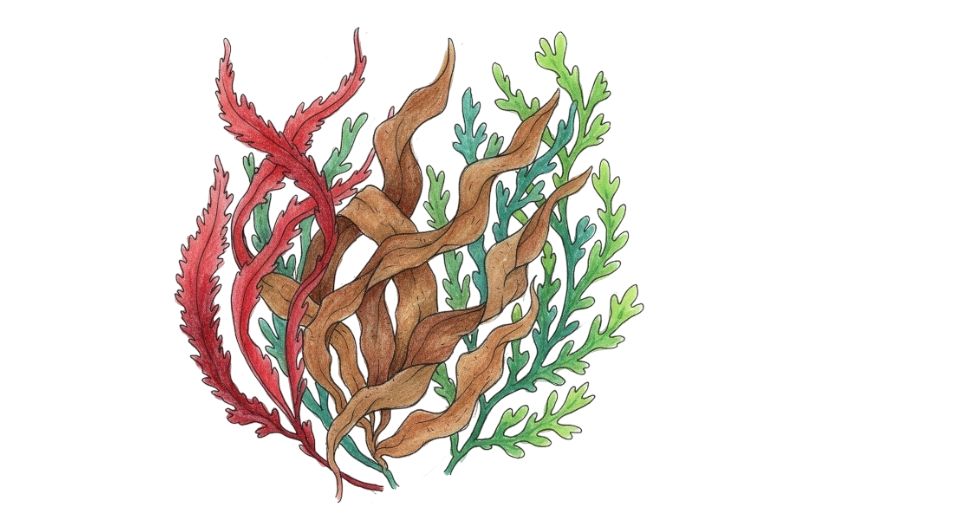
Oct 23, 2025

The changing tides of the global commercial seaweeds market, according to Metastat Insight, illustrate how oceans are making their presence felt in industries and lives alike. From what appears on plates during meals, to what goes into packaging and to that which is utilized in skin care, seaweed has been surreptiously integrated into daily life. The challenge is increasingly shaping the expanding perception of natural assets, sustainable inputs, and resiliency of the environment in this regard by underscoring the high prospects of cultivation in the sea. What had been viewed as a coastal indulgence has become a cornerstone in certain sectors, combining innovation with environmental harmony. Market Context
Cross-industry, the quest for sustainable and green inputs has grown.
Land farming is limited in terms of soil, fresh water availability, and environmental pressure, leading firms and scientists to seek marine resources. It is through this shift that the world Commercial Seaweeds market offered by Metastat Insight has been at the forefront of the debate. Seaweed aquaculture brings into play the unique synergy of flexibility and sustainability—it does not take up arable land, enables carbon sequestration, and generates products suitable for various industries like food, drugs, cosmetics, and bio-based products. As businesses and governments redefine growth towards nature, seaweed aquaculture ceases to be a niche activity and is now a pioneering approach that balances economic value and nature's restoration. How It Works / Why It's Valuable Seaweed farming is an easy yet efficient biological process. By means of photosynthesis and the absorption of nutrients from seawater, a variety of algae are cultivated near shorelines or off-shore farms. The crops develop quickly with no application of pesticides or fertilizers, yielding biomass that may be processed into limitless end products. Seaweed's ease of cultivation and scalability make it one of the finest renewable marine resources.
In the food industry, it enhances foods with natural minerals and umami flavors.
In cosmetics, its bioactive compounds impart moisture and anti-aging characteristics. In drugs, the extracts are used as stabilizers and medicines. Even in agriculture and energy, solutions from seaweed are being researched for biofertilizers and biofuels. Apart from product diversity, its cultivation supports ocean health through water quality improvement and coastal erosion buffering. Few other natural resources provide economic and environmental returns so harmoniously.
Growth Story / Technological Evolution
The history of the global commercial seaweeds market has been that of evolutionary progress. Nurtured initially by centuries of shore harvesting on the shores of Asia, the process has spread to the world in the guise of aquaculture technology advancement. Automation, advanced breeding technology, and monitoring systems over the years have maintained optimum productivity with lower labour intensity. Computer support such as satellite mapping and data analysis also enhanced site identification and sustainability methodologies. Innovation has also been imparted to product and processing innovation. Processing technology now enables improved retention of bioactive molecules, which leads to improved quality in applications. Cooperation in research by academia, private enterprise, and coastal society has promoted new utilization and profitability. This redefined seaweed from a regional product to an institutionalized, high-value part of international commerce.
Regional or Global Trends
The adoption is advanced best in countries with established aquaculture culture and supporting coastal ecosystems. Asian coastal countries have long networks of farming with indigenous knowledge and government support. In other areas, embryonic developments in Europe, North America, and Africa are finding momentum as ocean-based economies become established.
Friendly policy and investment of marine biotechnology in nations are seeing more interest from incumbent players and start-ups looking at bioplastics, animal feed nutrients, and alternative proteins of seaweed. The crossover of research grants, missions for sustainable development, and circular economy objectives is constructing a global environment where new players are adopting the business with greater confidence.
Challenges and Opportunities
There remain challenges in the face of robust momentum. Cultivation infrastructure can be costly, and seasonality and water quality erode productivity. Regulatory regimes are uneven between regions and vary in the instance of licensing and zoning policy. Logistics and storage must be innovated to avoid spoilage and ensure product integrity.
On the other hand, there also come new opportunities. New solutions to these challenges are emerging through multilateral collaborations between technology creators, ocean scientists, and coastal societies. Offshore cultivation enhancement, sustainable packaging, and added-value processing open new markets. With natural resources and carbon-negative products, the world industries are looking for, and seaweed's ability to satisfy commercial demands while preserving sustainability is becoming ever more popular.
Why It Matters Now
momentum for sustainable growth and ocean stewardship has come to a tipping point. Seaweed has been highlighted in the Metastat Insight Commercial Seaweeds market report as a way of being an input to larger agendas like food security, climate resilience, and renewable material innovation. Seaweed is a pragmatist and a possibility within industries that are moving towards circularity and lower carbon footprints.
Its incorporation into mass cycles of consumption and production is a transformation of the natural ecosystem value. The combined effort towards sustainability, clean industries, and proper resource management is linked directly to the advantages of seaweed farming. The destiny of global production systems can likely hinge on how much the world is able to tap such sea potential—not just as an industry, but as a piece in a grander game of balancing growth and nature. For this, the Commercial Seaweeds global market data by Metastat Insight is a reflection of what is sustainable development all about—an intersection of innovation, environmental sustainability, and economic renewal.
Drop us an email at:
Call us on:
+1 5186502376
+91 73850 57479